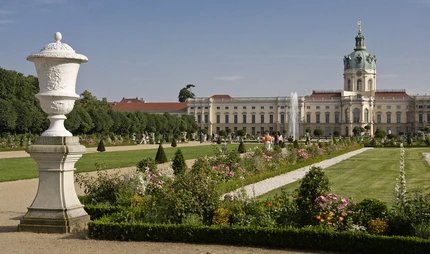
Käthe-Kollwitz-Museum Berlin
Art that touches and moves
The famous sculptor lived and worked in Berlin for more than 50 years, writing a significant piece of art history in the process. Her works reflect great social and human commitment and also touch people beyond German or European borders. See her world-famous paintings and sculptures in the prestigious premises of the theatre building at Charlottenburg Palace.

Welcome to the Käthe Kollwitz Museum Berlin,
a place that honours the impressive life and creative history of one of the most important female artists of the 20th century. century is honoured. For more than five decades, the city of Berlin was the place of work of Königsberg-born Käthe Kollwitz (1867-1945). She left behind an oeuvre that radiates far beyond the borders of Germany. Her works are not only artistically significant, but also powerful testimonies to her social and human commitment. They are perceived as enriching by art lovers and socially committed people alike.

Significant art, right next to Charlottenburg Palace
Since September 2022, the museum, formerly located in Fasanenstraße, has been housed in the new, prestigious premises of the theatre building at Charlottenburg Palace and offers you the opportunity to immerse yourself in the world of Käthe Kollwitz. The permanent exhibition providesa broad overview of the graphic artist and sculptor's entire oeuvre and honours her great artistic skills.

An impressive collection of drawings, graphic and sculptural works awaits you here, including the famous woodcut cycle about the war, drawings as preparations for the prints and the famous sculpture "Pieta" in original size. A particular highlight of the collection are the self-portraits, which were created over a period of 50 years and provide a deep insight into the artist's sense of self. The centrepiece of the collection is an early self-portrait - the only known portrait of Kollwitz in which she depicts herself laughing.

Artist and passionate fighter
Käthe Kollwitz was not only an outstanding graphic artist and sculptor, but also a passionate fighter for social justice and peace. Her experiences in the working-class neighbourhood of Prenzlauer Berg had a decisive influence on her work. The loss of her son Peter in the First World War intensified her commitment against the war and social inequality, themes that she dealt with forcefully in her work.
She first became known in 1898 with her work "A Weavers' Revolt" and quickly became an important voice in the art scene. Her membership of the Deutscher Künstlerbund and the Berlin Secession as well as numerous awards, including the Orden Pour le Mérite for Sciences and Arts, testify to her commitment, influence and recognition. Appointed a member of the Prussian Academy of Arts in 1919, she was the first woman to head the masterclass for graphic art there from 1928.
There is no doubt that Käthe Kollwitz was one of the women who had a lasting influence on the Berlin art scene. Read more about women who had a major influence on the city:

The Käthe Kollwitz Museum not only offers you an insight into the artist's most important works, but also into the time in which she lived. You can experience the zeitgeist of the era and her large network of artist colleagues, friends and comrades-in-arms digitally prepared as an accompaniment to the tour through the permanent exhibition.
Review: An artist of the labour and peace movement
When Käthe Kollwitz moved to Berlin at the end of the 19th century, she ended up in the rough working-class district Prenzlauer Berg. As the wife of a socially committed doctor, she experienced poverty, suffering and hunger there. In 1914, her son Peter was killed in the First World War. The social question and the fight against the war became themes that she made her own and incorporated into her work.
Käthe Kollwitz first achieved fame in 1898 with her participation in the Great Berlin Art Exhibition. With her work A Weavers' Revolt, she attracted the attention of Max Liebermann. In 1906, she was honoured with the Villa Romana Prize. She became a member of the Deutscher Künstlerbund and the Berlin Secession, became involved in international workers' aid, was a professor at the Prussian Academy of Arts and was the first woman to receive the Order Pour le Mérite for Sciences and Arts.
In 1933, the National Socialists forced her to resign from the Prussian Academy of Arts. Käthe Kollwitz was dismissed from her position as head of the master class for graphic art. In 1936, her works were removed from the Berlin Academy exhibition as degenerate art.
Her husband died in 1940. During the bombing raids, she left Berlin and moved to Nordhausen. She died in Moritzburg near Dresden before the end of the war in 1945.
From 1950 onwards, the art dealer Hans Pels-Leusden collected Käthe Kollwitz's drawings. From 1986, he finally exhibited his art treasure to the public: The Käthe Kollwitz Museum opened its doors.



